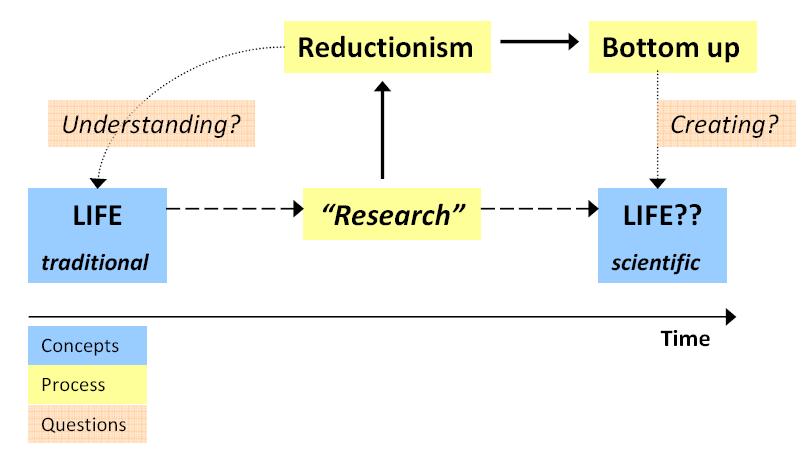Team:TUDelft/Ethics
From 2009.igem.org
Reductionism in Synthetic Biology, an Ethical Issue
Since genetic engineering was first applied in 1973, research on enhancing micro-organisms has taken a leap. The ability to change the behavior of biological systems by modifying the genetic code has been the basis for research in synthetic biology. Although the possibilities of synthetic biology seem promising and applications are virtually endless, concerns are raised about the fast progression, possible risks and ethical implications.
A rough division of the different main concerns in synthetic biology is shown in Figure 1. Ethical and political issues concerning bio-safety, bio-security and intellectual property rights have been discussed elaborately. Ethical discussions concerning the top-down (reductionist) approach towards understanding living systems and the bottom-up approach of enhancing/creating biological systems are lagging behind. Craig Venter, one of the lead researchers in synthetic biology, is working on a controversial project with a goal to create artificial life. He is one of many that use the reductionist and bottom-up approach in biology to search for the foundation of life.
Reductionism can be explained as an approach to understand complex systems by reducing them to their subsystems. In biology, a way to understand the nature of complex living entities is by looking at the function of individual components (e.g. DNA, proteins) and their relations. The bottom-up approach of (re-)engineering biological systems is the modifying of such components, mainly by genetic engineering techniques. How the different approaches are related to understanding life and creating artificial life is shown in Figure 2. More information on ethical issues in synthetic biology can be found in the Background section.
How do the public and the scientific community feel and think about life-related questions and the reductionism approach in biology? These are difficult questions. But now that we are directing evolution and trying to artificially create life, we have come to a point at which we need to discuss these issues. We will never get a clear answer on philosophical questions such as, "what is life?", even the scientific community is much too homogeneous for that. Still, a discussion to raise awareness and make us think about these questions could help in the debate on whether researchers should pursue the controversial goals that are present in synthetic biology. Furthermore, communication to the general public should be much easier if an overview of the different believes and opinions within the scientific community are available.
A qualitative and quantitative analysis on the opinions of researchers on reductionism in synthetic biology could be achieved by approaching many people in this particular field of science (mostly iGEM supervisors and participants). To pursue the quantitative analysis, I have invited many iGEM teams to complete a short questionnaire.
The survey on reductionism in synthetic biology is now closed. We are grateful to all the people who took the time to participate in the survey. Thanks to them we now have a total of 242 responses of iGEM students, supervisors and advisors.
References: [http://www.synbioproject.org/library/publications/archive/synbio3/ Parens, 2006] | [http://www.nature.com/nature/journal/v420/n6914/full/420350b.html Check, 2002]
 "
"









